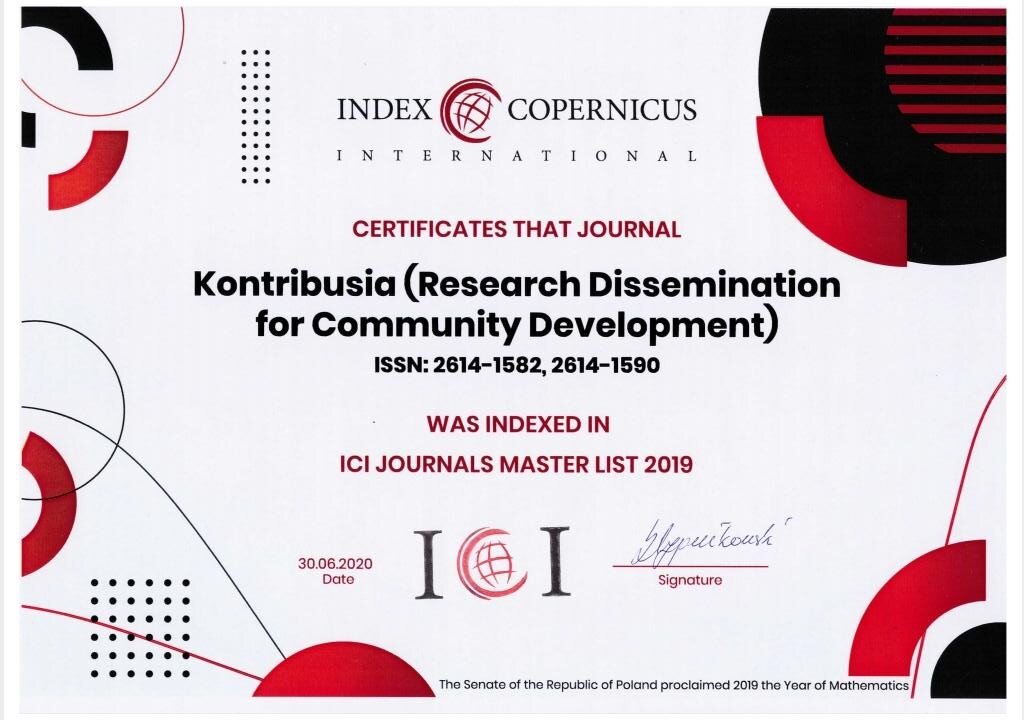Sensory evaluation of wet noodle products added with Moringa oleifera flour with different concentrations
Abstract
Noodles are foods that are often consumed by the community as a substitute for rice carbohydrates. Generally, noodles are only made from wheat flour which only has a carbohydrate source. Nutritional needs are not only carbohydrates but also fats and proteins and mineral groups. The purpose of this study was to determine the sensory properties of wet noodle products added with Moringa oleifera leaf flour with various concentrations. The concentration of Moringa oleifera flour compared to wheat flour used in making wet noodles was 0%:100%, 5%:95%, 10%:90%, and 15%:85%. The analytical parameters used are taste, color, aroma , and texture. The panelists used were untrained panelists. Panelists were asked to analyze the hedonic test on the sample of wet noodles served. The results showed that the concentration of Moringa oleifera leaf flour and wheat flour had an influenced on the hedonic level of each parameter in wet noodles. Overall, the best organoleptic value for wet noodles added with Moringa oleifera leaf flour was 5% and wheat flour 95% which had an average hedonic level of 103.06 colors, 102.34 aromas, 103.63 taste, and 100.71 on texture. While the lowest hedonic value was in the ratio of Moringa oleifera leaf flour and wheat flour of 15%: 85% with hedonic results 32.09 colors, 29.44 aromas, 29.89 taste, and 38.37 in texture. So it can be concluded that Moringa oleifera leaf flour is good in organoleptic substitution by 5%. Similar studies are needed with different or smaller concentrations of Moringa oleifera leaf powder.Downloads
Download data is not yet available.
Published
Aug 4, 2021
How to Cite
PRAYITNO, Sutrisno Adi; AGUSTIN MARDIANA, Nur; ALIFIA ROCHMA, Nurthalita.
Sensory evaluation of wet noodle products added with Moringa oleifera flour with different concentrations.
Kontribusia : Research Dissemination for Community Development, [S.l.], v. 4, n. 2, p. 450-454, aug. 2021.
ISSN 2614-1590.
Available at: <https://journal.umg.ac.id/index.php/kontribusia/article/view/2738>. Date accessed: 18 nov. 2024.
doi: http://dx.doi.org/10.30587/kontribusia.v4i2.2738.
Section
Articles











